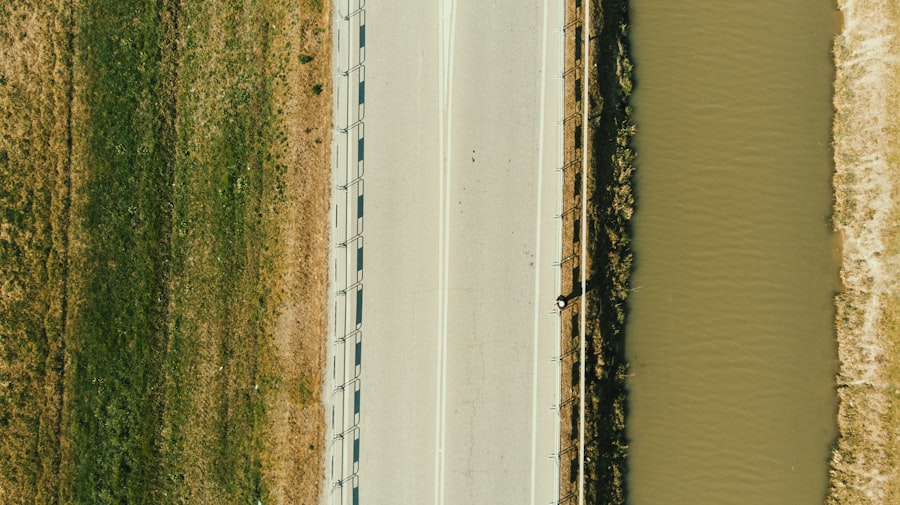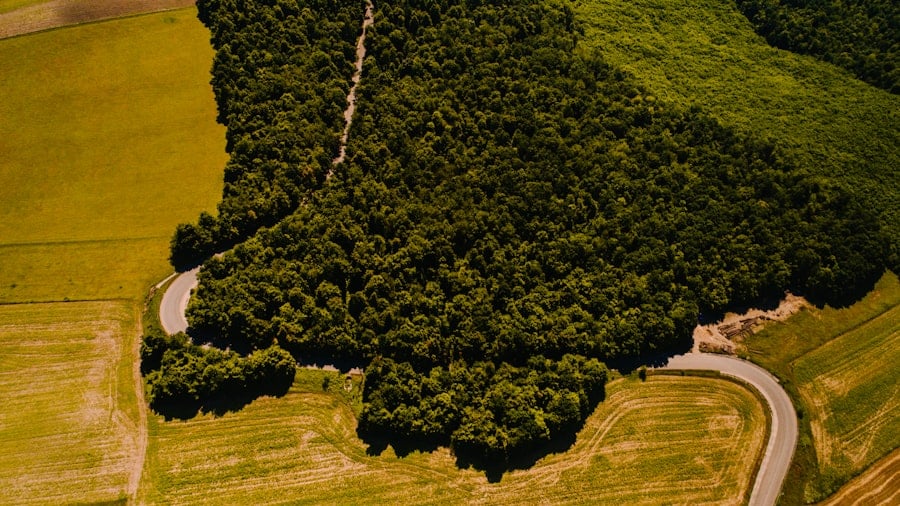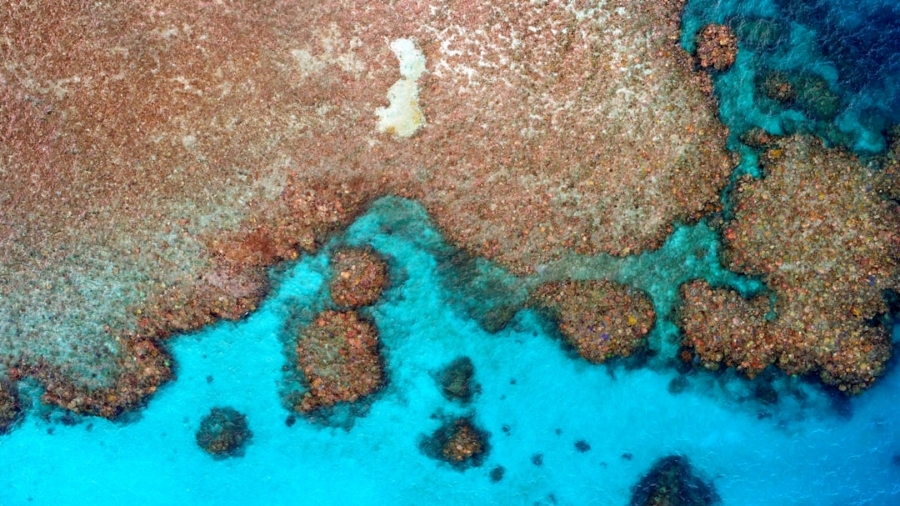Drone photography has revolutionized the way we capture images and videos from above, offering a unique perspective that was once reserved for helicopters or planes. At its core, drone photography involves using unmanned aerial vehicles (UAVs) equipped with cameras to take photographs or record videos from the sky. This technology has democratized aerial imaging, making it accessible to hobbyists, professionals, and everyone in between.
The appeal lies not only in the breathtaking views that can be captured but also in the creative possibilities that arise from being able to shoot from various altitudes and angles. The fundamental components of drone photography include the drone itself, the camera, and the operator’s skill set.
The camera quality is paramount; many drones are equipped with high-resolution cameras capable of shooting in 4K or even 6K, allowing for stunning detail and clarity. Understanding how these elements work together is essential for anyone looking to delve into drone photography. The interplay between the drone’s flight capabilities, camera settings, and the operator’s vision can lead to extraordinary results that capture the imagination.
Key Takeaways
- Drone photography allows for unique and stunning aerial perspectives
- Consider factors such as camera quality, flight time, and stability when choosing a drone for photography
- Practice flying your drone in an open area to master control and maneuvering
- Adjust camera settings such as ISO, shutter speed, and white balance for optimal drone photography
- Experiment with different angles and styles to capture diverse and captivating drone photography shots
Choosing the Right Drone for Photography and Filming
Selecting the appropriate drone for photography and filming is a critical step that can significantly impact the quality of your work. The market is flooded with options, ranging from entry-level models to high-end professional drones. When choosing a drone, consider factors such as camera quality, flight time, range, and ease of use.
For instance, drones like the DJI Mavic Air 2 offer a robust camera system with a 48MP sensor and 4K video capabilities while remaining compact and user-friendly. This makes it an excellent choice for both beginners and seasoned photographers looking for portability without sacrificing quality. Another important consideration is the drone’s stability and control features.
Drones equipped with advanced stabilization technology, such as gimbals, can produce smooth footage even in windy conditions. Additionally, features like obstacle avoidance systems can enhance safety during flight, allowing you to focus more on capturing stunning visuals rather than worrying about potential crashes. For those who are serious about aerial photography, investing in a drone with interchangeable lenses or one that supports RAW image formats can provide greater creative flexibility and post-processing options.
Learning How to Fly and Control Your Drone

Mastering the art of flying a drone is essential for anyone interested in aerial photography. While many drones come with user-friendly interfaces and automated flight modes, understanding the fundamentals of flight control can significantly enhance your ability to capture compelling images. Start by familiarizing yourself with the drone’s controls and features through practice flights in open areas free from obstacles.
This will help you develop a feel for how the drone responds to inputs and how to maneuver it effectively. In addition to basic flying skills, learning about different flight modes can expand your creative possibilities. Many drones offer modes such as Follow Me, Waypoint Navigation, and Circle Mode, which allow you to capture dynamic shots without needing constant manual control.
However, relying solely on automated features can limit your creativity; therefore, it’s crucial to practice manual flying as well. Understanding how to adjust altitude, speed, and orientation will enable you to execute complex shots that showcase your unique perspective.
Mastering Camera Settings and Techniques for Drone Photography
Once you have a handle on flying your drone, the next step is mastering camera settings and techniques specific to aerial photography. Understanding exposure settings—aperture, shutter speed, and ISO—is vital for achieving well-balanced images. For instance, a lower ISO setting can reduce noise in your photos but may require slower shutter speeds or wider apertures to maintain proper exposure.
Conversely, higher ISO settings can be useful in low-light conditions but may introduce graininess into your images. In addition to exposure settings, composition plays a crucial role in creating visually appealing photographs. The rule of thirds is a fundamental guideline that can help you frame your shots effectively; by placing key elements along imaginary lines dividing your image into thirds, you can create more dynamic compositions.
Experimenting with different angles and perspectives is also essential; aerial photography allows for unique vantage points that can transform ordinary scenes into extraordinary images. Utilizing techniques such as leading lines or framing can further enhance your compositions.
Exploring Different Styles and Angles in Drone Photography
The versatility of drone photography opens up a world of creative possibilities when it comes to styles and angles. Aerial shots can range from sweeping landscapes that capture vast expanses of nature to intimate close-ups of architectural details or urban environments. Exploring different styles allows photographers to develop their unique voice and vision.
For example, capturing dramatic landscapes at sunrise or sunset can evoke emotions through color and light, while urban photography might focus on symmetry and patterns found in cityscapes. Angles play a significant role in how a photograph is perceived. High-angle shots can provide context and scale to a scene, while low-angle shots can create a sense of grandeur or drama.
Additionally, experimenting with tilt-shift effects can give images a miniature look that adds an artistic flair. By varying your approach—switching between wide shots that encompass entire scenes and tighter shots that focus on specific details—you can create a diverse portfolio that showcases your ability to see the world from multiple perspectives.
Tips for Capturing Stunning Aerial Footage

Capturing stunning aerial footage requires not only technical skills but also an understanding of storytelling through visuals. One effective technique is to plan your shots ahead of time by scouting locations and considering the best times of day for lighting conditions. Golden hour—shortly after sunrise or before sunset—provides soft, warm light that enhances colors and textures in your footage.
Additionally, using natural elements such as clouds or water reflections can add depth and interest to your shots. Smooth movements are crucial for creating professional-looking footage. Rapid jerky motions can detract from the viewing experience; instead, practice slow pans and gentle ascents or descents to maintain fluidity in your shots.
Utilizing features like slow-motion recording can also enhance dramatic moments within your footage. Furthermore, incorporating movement into your shots—such as flying towards a subject or circling around it—can create dynamic visuals that engage viewers more effectively.
Understanding Legal and Safety Considerations for Drone Photography
As drone photography becomes increasingly popular, understanding legal regulations and safety considerations is paramount for responsible operation. Different countries have varying laws regarding drone usage; for instance, in the United States, the Federal Aviation Administration (FAA) requires drone operators to register their UAVs if they weigh more than 0.55 pounds. Additionally, operators must adhere to specific guidelines such as maintaining visual line-of-sight with their drones and avoiding restricted airspace near airports or military installations.
Safety should always be a priority when flying drones for photography. Conducting pre-flight checks—ensuring that batteries are charged, propellers are secure, and GPS signals are strong—can prevent accidents during operation. Moreover, being aware of weather conditions is essential; strong winds or rain can affect flight stability and safety.
Respecting privacy laws is also crucial; always seek permission before flying over private property or capturing images of individuals without their consent.
Editing and Post-Processing Tips for Drone Photography and Filming
Editing plays a vital role in enhancing drone photography and filming by allowing photographers to refine their images and create cohesive visual narratives. Software such as Adobe Lightroom or Photoshop provides powerful tools for adjusting exposure, contrast, saturation, and sharpness. For video footage, programs like Adobe Premiere Pro or Final Cut Pro offer advanced editing capabilities that enable color grading, transitions, and sound design.
When editing drone footage, consider creating a consistent style that reflects your artistic vision. This could involve applying specific color grading techniques or using similar editing styles across different projects to establish a recognizable aesthetic. Additionally, incorporating music or sound effects can elevate the emotional impact of your videos; selecting tracks that complement the visuals can create an immersive experience for viewers.
By investing time in post-processing techniques, you can transform raw footage into polished works of art that resonate with audiences on multiple levels.
For those who are diving into the world of drone photography and filming, having the right equipment is crucial to achieving high-quality results.
A related article that can help you choose the right tools for editing your drone footage is


